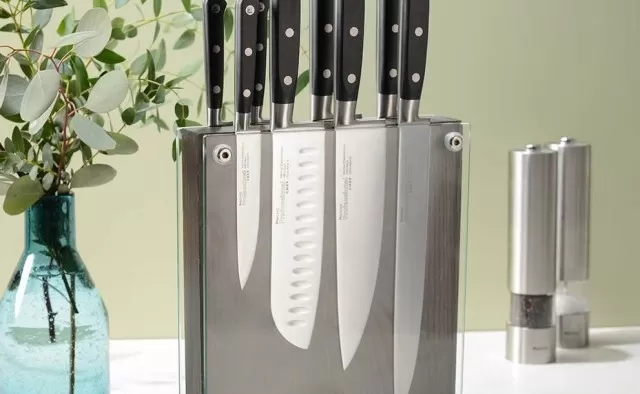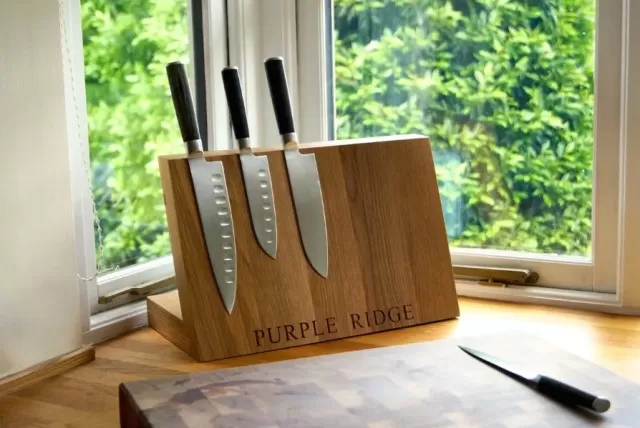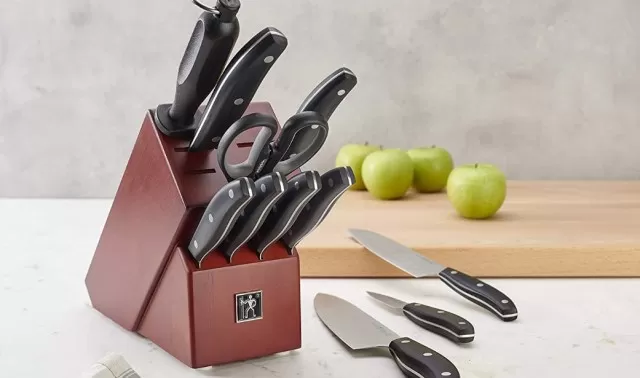It’s important to note that those small slots in the knife block may be harboring bacteria, which can transfer into your food every time you use a knife.
If you own a knife block, it’s likely a kitchen tool you use regularly when cooking.
Even if you prefer take-out meals, you probably have the decorative yet functional accessory sitting on your countertop without giving it much consideration. However, it’s important to note that those small slots in the knife block may be harboring bacteria, which can transfer into your food every time you use a knife to slice tomatoes or chop onions.
Fortunately, there are methods to ensure your knife block remains clean and free from bacteria.
Let’s explore the advice provided by experts.
Are Knife Blocks Actually That Dirty?

If you think that knife blocks remain clean as long as you don’t put dirty knives back in them, you may be surprised to learn that even clean knives can harbor bacteria within the slots.
Alexis Novacek, a home market expert, explains the reasons behind this and offers advice on what to do about it.
Novacek emphasizes the importance of properly maintaining knife blocks to prevent them from becoming dirty.
It’s crucial to dry off knives before storing them in the block, a step that many people overlook.
“Placing wet knives back into the block can lead to mold growth, creating a hazard in your kitchen that can be challenging to eliminate,” Novacek warns.
How to Deep-Clean Knife Blocks

Novacek suggests the following steps to thoroughly clean your knife block:
Clean the Slots.
Remove all the knives from the block and turn them upside down, shaking out any crumbs.
Then, turn it right-side up and use a pipe cleaner to dislodge any remaining crumbs from the slots.
Clean the Outside.
Clean the outside of the block using Soapy Water.
Novacek recommends using a scrubby sponge or brush, along with soap and water, to scrub the block’s exterior gently.
“Be cautious not to use excessive water since moisture is the main cause of mold and bacteria growth,” Novacek advises.
Once done, wipe down the block with a clean, damp cloth.
If there’s any excess moisture or soapy residue, use a scraper to remove it.
“Take a wood scraper and run it along all sides of the block.
Then, wipe the block again with another clean, dry cloth to ensure all excess moisture is gone,” Novacek explains.
Utilize a Bleach Solution.
After thoroughly drying the block, preferably overnight, prepare a solution by mixing one teaspoon of bleach with four cups of water.
“Clean the outer surface of the wooden block using a scrub brush and the diluted bleach solution,” Novacek advises.
Dip a pipe cleaner in the bleach solution to clean each slot.
Afterward, wipe it down with a damp cloth and let it dry completely for at least 12 hours.
How to Prevent Your Knife Block from Getting Dirty

Once you’ve put in the effort to clean your knife block, it’s important to maintain its cleanliness.
Here are a few suggestions to help you achieve that:
Choose the Right Block Novacek recommends selecting a knife block made of certain types of wooden material that provide added protection.
“With ZLINE, our block is constructed with professional quality Acacia wood, which is highly water-resistant and durable, offering excellent protection against bacteria,” Novacek explains.
If you’re shopping for a knife block, avoid ones that appear cracked, cheap, or lack information about the type of wood used.
Consider a Sheath Instead For those who prefer low-maintenance knife storage, using a sheath can be a better alternative.
Kristina Wasserman, senior director of product design at Our Place, suggests that knives are best stored safely and cleanly in a well-fitting sheath.
“A sheath not only protects the blades and tips from damage but also helps prevent accidents,” Wasserman points out.
Storing knives uncovered in a drawer is not recommended.
“A sheath ensures that your knives remain in great condition, even when thrown loosely in a drawer, and they can easily be taken on the go such as for a picnic spread,” Wasserman adds.
“If you’re not using a block, a sheath is a must, which is why every Our Place knife includes one. Just remember to wash and fully dry the knives before storing them.
“.
*The information is for reference only.